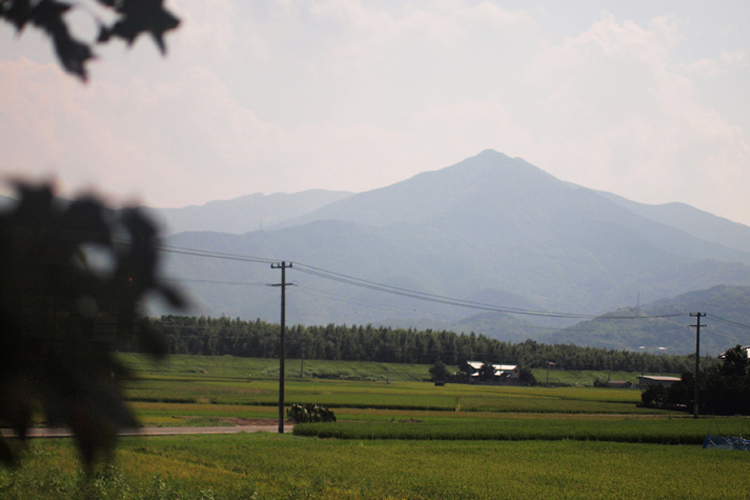
menu
close
The Yoshino River, which runs east to west through Tokushima Prefecture, used to be a raging river that flooded every year.
The fertile soil carried upstream from the Yoshino River made it possible to grow indigo, in which requires a lot of fertilizer.
During the Edo period (1603-1867), the Awa clan ※1 flourished as the center of indigo dye production, and the name "Awa" became synonymous with indigo ※2.
The town of Yamakawa, where Awagami Factory is located, is on the south bank of the Yoshino River, and has long been a center of indigo cultivation.
However, during the Meiji period (1868-1912), the import of Indian indigo and the industrial production of synthetic indigo began, and the production of Awa Ai※3 declined rapidly.
However, demand for Awa Ai continued to grow, and around 1965, the Mingei (folk art) movement began to take root in the area, which led to a renewed appreciation of the merits of plant-based indigo.
※1 Awa clan : Old domain of Tokushima prefecture.
※2 Indigo : Persicaria initiatora, it’s called ‘ai’ in Japanese.
※3 Awa ai : The rumpy products of composted indigo called ‘tsukumo’ made in Awa region.

At Awagami Factory, our predecessor Minoru Fujimori reproduced indigo-dyed washi based on ancient records.
Unlike cloth, even the strongest washi paper will tear if it is soaked in indigo solution many times or washed in water.
Together with his wife, Tsune Fujimori, he went through various trials and errors to develop indigo-dyed washi that met modern needs and to stabilize its quality, creating many unique patterns.
The technique has been passed down through the generations, and Awagami's indigo-dyed washi is used in a wide variety of situations as we pursue more beautiful materials that meet the needs of the times.
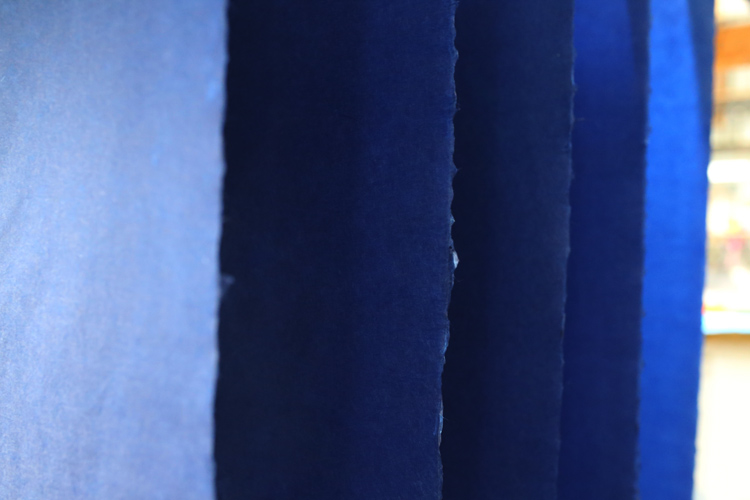
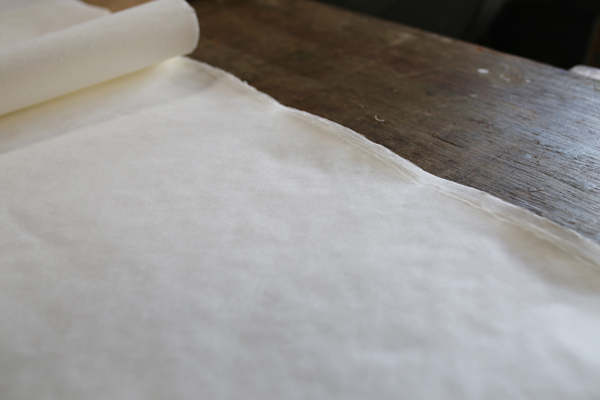
Before starting to indigo-dye, remove dust on the surface of paper in which avoids uneven results.
The washi-paper is pre-casted tor water-resistance.
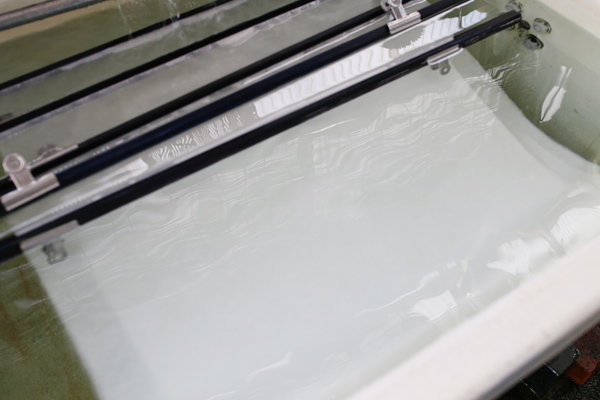
Sook in subtarranean well water from Yoshinogawa River.
In this way, indigo dye can be penetrated into paper thoroughly.
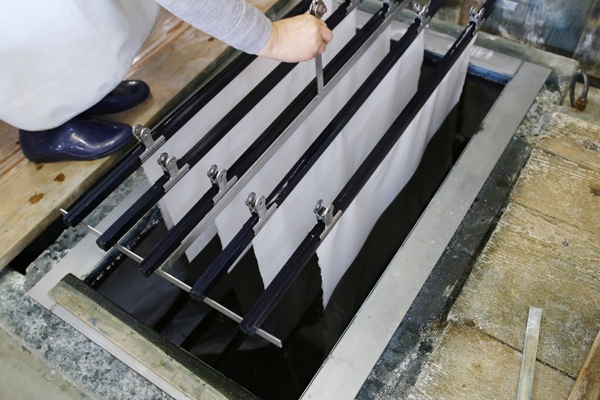
Dip into Indigo dye solution.
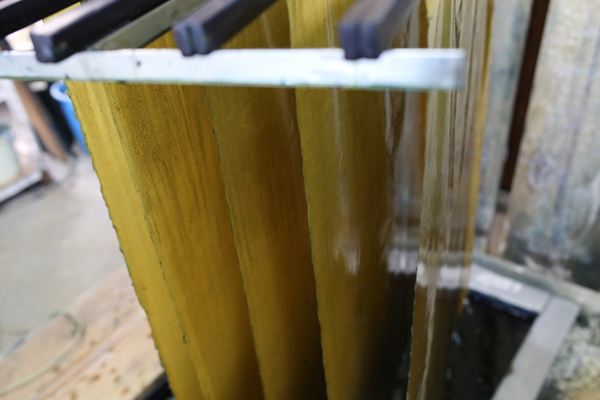
Pull the paper up out of the jar.
Oxidation occurs when the paper is exposed to air.
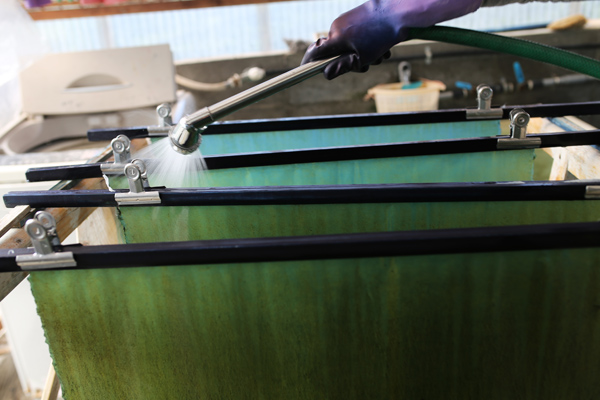
Rinse with water thoroughly.
The colour of the paper gradually turns into blue.
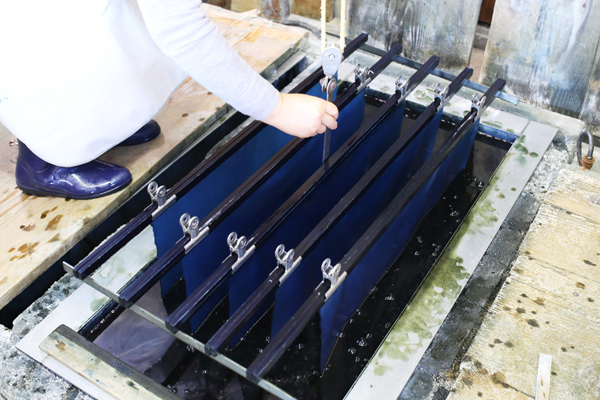
Dip into the indigo-dye solution again.
Repeat the process several times, the paper is dyed indigo blue.
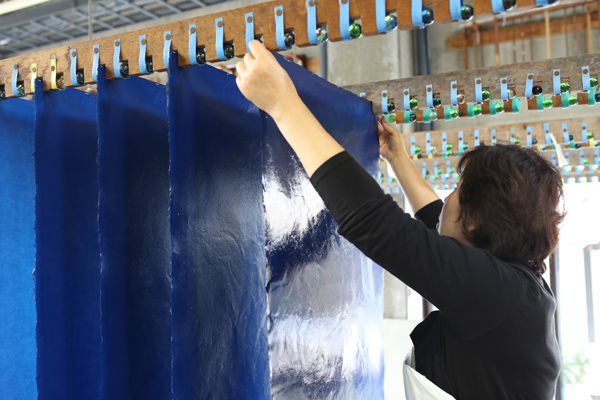
Soak the paper into water bath several times.
She's drying the paper on hunging rack.
Artists from around the world are deeply interested in aizome washi. Alice Austin, a printmaker and book artist from Philadelphia, USA, visited Awagami and experienced indigo dyeing under the guidance of Mieko Fujimori. This is a video report of the event.
We accept custom orders and large-lot production.
Please feel free to contact us.